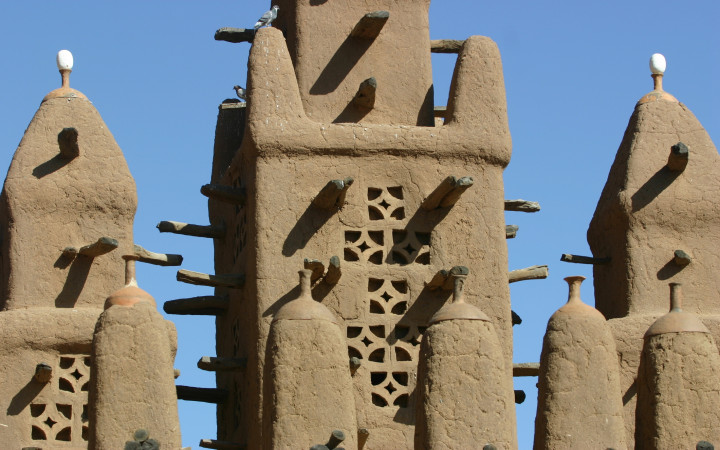Today’s Wonder of the Day was inspired by thersha. thersha Wonders, “Tell us about Timbuktu from 1100 to present day Mali.” Thanks for WONDERing with us, thersha!
What places pop into your head when you think of the ancient world? The Roman Colosseum? The city of Petra? Maybe you picture great Mayan structures. Or maybe you think of the topic of today’s Wonder of the Day—Timbuktu!
Timbuktu was founded around the year 1100 C.E. It sits near the Niger River, on the southern border of the Sahara Desert. This location helped the city become a center of trade. Quickly, ancient Timbuktu grew to be quite wealthy.
As part of the Mali Empire, Timbuktu was also a place of learning. Students there studied Islam, law, history, geography, astronomy, and many other subjects. Many of them also acted as missionaries. They helped spread Islam throughout western Africa.
As more trade routes opened, the strength of the Mali Empire waned. In 1468, Timbuktu was taken over by the Songhai Empire. Still, the city and its population of 100,000 continued to prosper.
Have you ever traveled to a place very far away? If so, maybe someone said you were going “from here to Timbuktu.” This phrase has long been used to describe long, difficult journeys. And for good reason! For centuries, European explorers heard stories about Timbuktu and tried to visit the city. The long and dangerous trek proved too much for most of them.
Starting in the 18th century, many Europeans tried to reach Timbuktu. It wasn’t until 1826 that a European made it to the city and back again. He was an explorer from France named René-Auguste Caillié. Later, in 1894, France invaded and colonized Timbuktu.
The nation of Mali gained independence from France in 1960. Timbuktu became one of its major cities. In the 1990s, efforts to protect the ancient city began. Most of these were focused on its three great mosques, which were built in the 1300s.
In 2012, Tuareg rebels and Islamic militants took control of part of Mali. This included Timbuktu. The city was placed under strict Shari’ah law. Many of its historic monuments were torn down. The extremists also burned many ancient manuscripts, except for those smuggled out of the city by librarians.
Timbuktu was freed from the rebels and militants in 2013. Today, the city is recovering and rebuilding. It is also a UNESCO World Heritage Site. The history of Timbuktu makes it a place that many people want to protect.
Have you ever been to Timbuktu? The ancient city has faced many trials. But after hundreds of years, it’s still standing! What other ancient places are you curious about?
Standards: C3.D2.His.2, C3.D2.Geo.6, C3.D2.Geo.7, C3.D2.Geo.8, CCRA.L.3, CCRA.L.6, CCRA.R.1, CCRA.R.2, CCRA.R.4, CCRA.R.10, CCRA.SL.1, CCRA.SL.2, CCRA.W.2, CCRA.L.1, CCRA.L.2




